Glossy buckthorn with berries
Image credit: Sigrid Resh
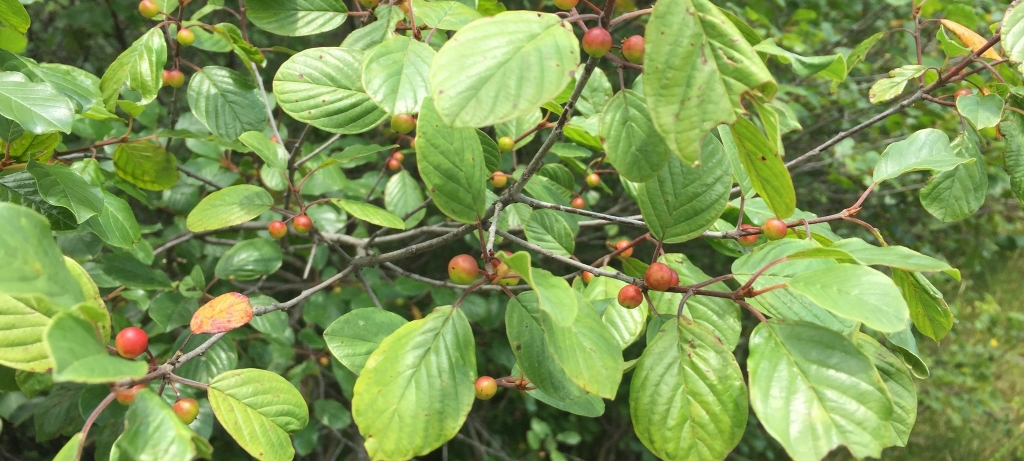
Glossy buckthorn with berries
Image credit: Sigrid Resh
Glossy buckthorn, a small, woody tree from the Rhamnaceae family, is an understory invasive that produces large amounts of seeds and outcompetes many native species. It’s also both sun and shade tolerant and can live in many different soil, moisture, and habitat conditions. Identifying characteristics of glossy buckthorn include:
Note: Glossy buckthorn is commonly mistaken with dogwood. A key difference between these two species is that the underside of glossy buckthorn leaves are shiny, whereas the underside of dogwood's leaves are not. Additionally, when torn apart carefully, dogwood leaves will have white strings.
For more information visit Woody Invasives of the Great Lakes (WIGL) Collaborative and Midwest Invasive Species Information Network (MISIN).
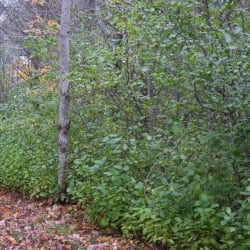
Glossy buckthorn overcrowding the understory
Image credit: Sigrid Resh
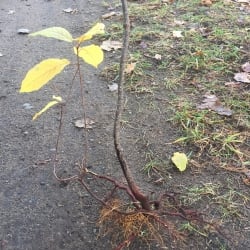
Glossy buckthorn stem and root system
Image credit: Sigrid Resh
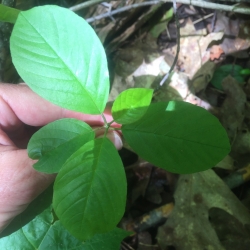
New leaves on sapling
Image credit: Sigrid Resh
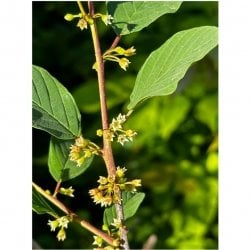
Glossy buckthorn flowers and stem
Image credit: Sigrid Resh
Buckthorn is a highly aggressive species that produces copious amounts of seeds and saplings and is able to take over an understory relatively quickly. It is crucial to start removing buckthorn before seed production and to remove fruit bearing trees when found for the best results. Here at KISMA, buckthorn is another major invasive species that we have at multiple sites. It’s critical to revisit sites after management as buckthorn seeds are viable in the ground for multiple years and it’s important to remove all seedlings. KISMA prioritizes removal of seed trees and satellite populations first, to prevent further spread of buckthorn.
Note: It's very important to remove seeds and seed-bearing trees first, as this is the main reproduction strategy of buckthorn.
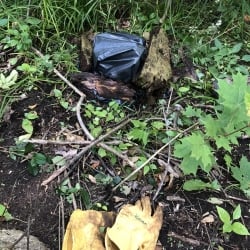
Securely fastened plastic bag used to smother buckthorn stump sprouts after cutting
Image credit: Sigrid Resh
Species that are excellent native alternatives to glossy buckthorn are native dogwoods like red-osier dogwood (Cornus sericea) and flowering dogwood (Cornus florida). Serviceberry (Amelanchier sp.) is also a great alternative providing a well needed food source for native wildlife. Other species such as highbush cranberry (Viburnum trilobum) and other native shrubs are great as well.